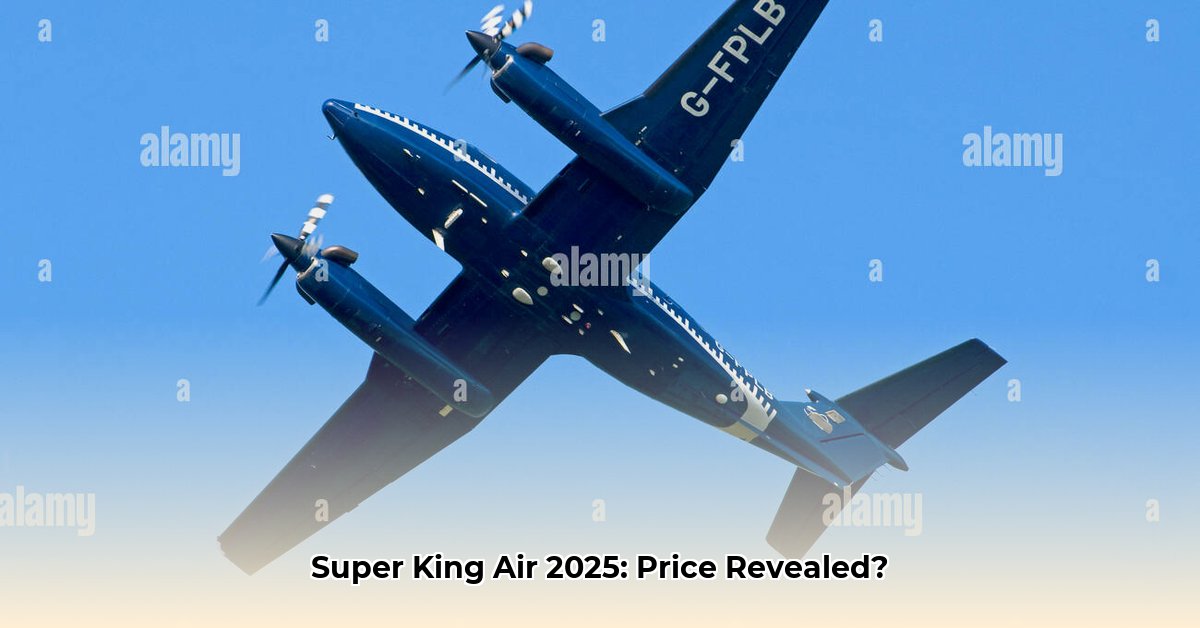
The Beechcraft B200 Super King Air: a name synonymous with luxury, efficiency, and a hefty price tag. But what does it really cost to own and operate one in 2025? This guide goes beyond the marketing brochures, diving into the practical financial realities of owning this iconic turboprop. We'll explore everything from initial purchase price to ongoing maintenance, providing you with the actionable intelligence you need to make an informed decision.
A Bit of History: The King Air's Legacy
The Super King Air isn't a newcomer; it’s a refined aircraft with a rich history, constantly evolving to stay ahead. Each generation brought improvements – more powerful engines, advanced avionics, and design refinements – all impacting both performance and running costs. This continuous evolution is a key reason for its enduring appeal in the competitive turboprop market. Isn't it fascinating how technology has shaped the cost of aircraft ownership over time?
Performance and Specifications: What You Get
The B200's performance is truly impressive. We're talking speeds, range, and payload capacity that are hard to beat in its class. But let's translate the marketing jargon into concrete numbers. Remember, these figures are estimates; real-world performance varies based on factors like weather and payload.
| Specification | Approximate Value | Notes |
|---|---|---|
| Maximum Speed | Around 310 knots (357 mph, 575 km/h) | Varies based on altitude, wind, and other flight conditions. |
| Typical Range | Highly variable; depends on payload and conditions | Consider this a range of possibilities rather than a fixed number. |
| Payload | Up to 11 passengers plus significant cargo space | Actual capacity varies based on passenger weight and luggage. |
| Fuel Efficiency | Relatively high for its size | Still a major operational expense; fuel costs are a significant factor. |
Versatility: Beyond Corporate Flights
The B200's strength lies in its versatility. It's used for corporate travel, air ambulance services, and even some military roles. This adaptability significantly influences its market value and operational costs. Different operational profiles mean vastly different expense structures. For example, consider the stark difference between the operational costs of a corporate charter versus a medevac operation. Which aspect do you consider most influential?
The Cost Reality: Acquisition and Operation
Let's address the less glamorous, yet crucial, aspect: cost. Owning a B200 is not a casual expenditure. The initial purchase price runs into millions of rands. And that's just the starting point. Ongoing costs – fuel, maintenance, insurance, crew salaries, hangar fees – add up rapidly. This is a significant, ongoing investment. Are you prepared for the financial commitment?
Maintenance and Operations: Keeping it Airworthy
Regular maintenance is paramount. Think of it as vital preventative healthcare for your aircraft. Neglecting this can lead to costly breakdowns and, more importantly, safety risks. A proactive maintenance schedule and swift attention to any issues are crucial for mitigating expenses in the long run. "A stitch in time saves nine," as the saying goes – and it's especially true in aviation.
Regulatory Compliance: Navigating the Legal Landscape
South African aviation regulations are complex. Staying compliant with regulations is not merely important; it's essential. Non-compliance can result in hefty fines, grounding of the aircraft, and potential legal issues, far outweighing any short-term cost-cutting measures.
Market Outlook: Future Trends and Resale Value
While newer aircraft continuously enter the market, the B200's reliability, performance, and versatility suggest it will remain a desirable aircraft for years to come. However, its long-term market position depends on evolving technology, shifts in market demand, and broader economic conditions.
Buyer's Guide: Steps to Smart Ownership
Considering a B200? Proceed strategically:
Secure Financing: Explore loan options, leasing agreements, and other financing avenues. This is a critical first step.
Insurance: Obtain comprehensive insurance coverage to safeguard your significant investment.
Budget for Maintenance: Plan realistically for regular maintenance, factoring in unexpected repairs.
Research Resale Value: Understanding the projected depreciation can significantly improve your financial planning.
Pre-Purchase Inspection: A thorough inspection by a qualified mechanic is vital to avoid costly hidden problems.
Conclusion: A High-Value Investment
The Beechcraft B200 Super King Air remains a highly valued aircraft. Its performance, versatility, and strong resale value make it an attractive proposition for those who can manage the significant operational costs. Thorough planning and proactive cost management are key to successful ownership.